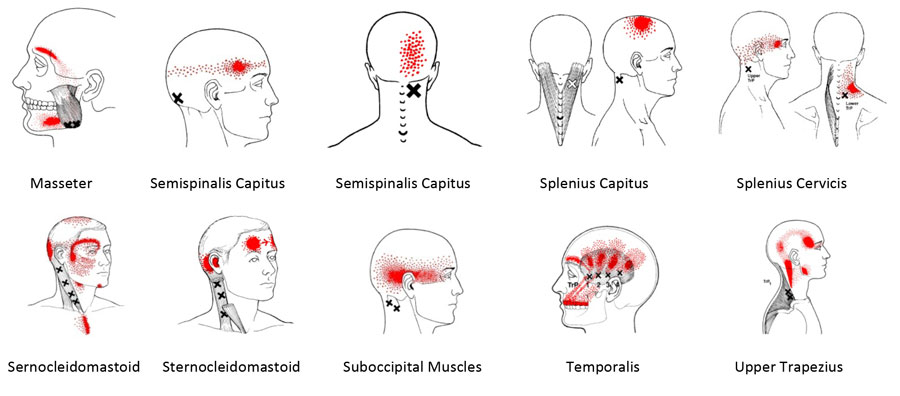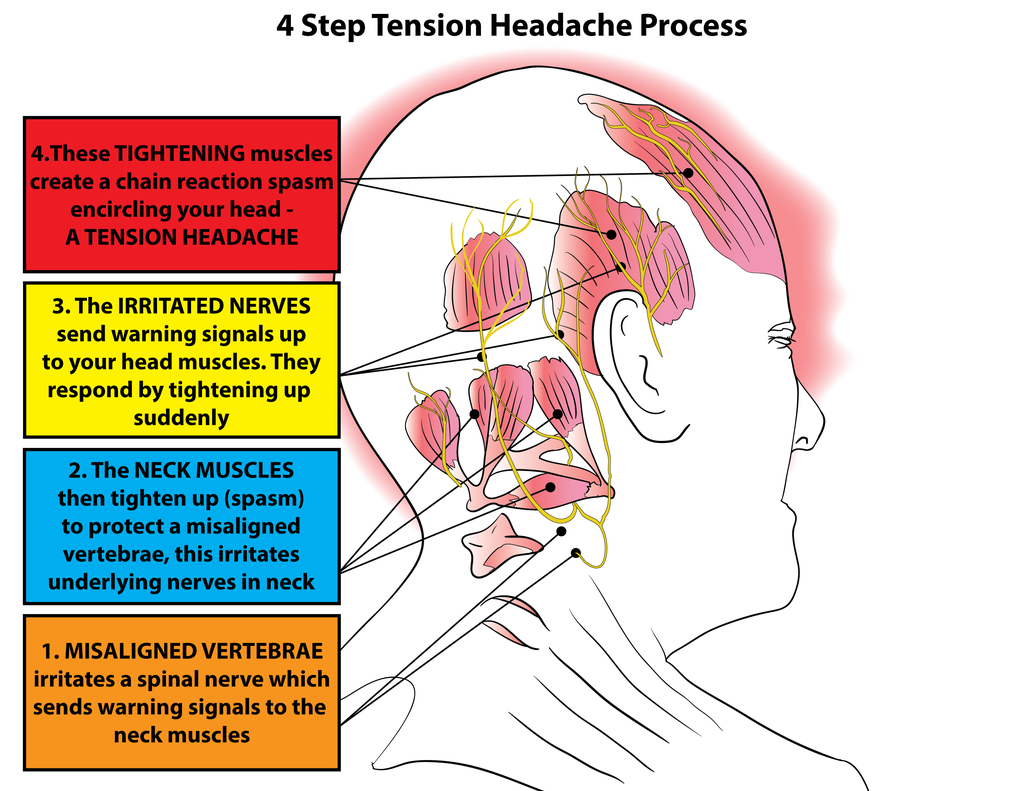nalco group
bone, muscle & joint pain physio
BOOK NOW / WHATSAPP ABOUT YOUR PAIN OR INJURY
- NOVENA 10 Sinaran Drive, Novena Medical Center #10-09, Singapore 307506
- TAMPINES 9 Tampines Grande #01-20 Singapore 528735
- SERANGOON 265 Serangoon Central Drive #04-269 Singapore 550265
Home > Blog > Cervicogenic Tension Headaches Physiotherapy
Cervicogenic Tension Headaches Physiotherapy

In today's break-neck speed in life, work, societal demands, we notice that there is an increasing trend of people reporting and suffering from headaches.
These patients often report two types (or reasons) for their headaches:
- The mental, emotional and physical stress from the type of lifestyle they have or want to pursue
- The nature of work that requires an individual to be in a prolonged static position working on devices such as computers and smart phones
not all headaches are migraine
Sometimes patients naturally call their headaches as migraine, but it can be inaccurate because there are a few types of headaches.
We recommend that patients who often suffer from headache to understand and identify the type of headache that they have, so it'd help to:
- identify the specific triggers
- be able to sense if there is a headache coming soon
- be able to seek appropriate management
all to pre-empt to reduce the intensity and duration of the headache.
Cervicogenic headache is in fact one of the common type of headaches and good news is that it can be treated with physiotherapy, whereas the main treatment for migraine is medication.

Cervicogenic Headache Versus Migraine
Migraine refers to a neurovascular disorder with signs of
- mostly one-sided (half) throbbing head pain
- lasting 4-72 hours and
- a group of neurological symptoms including increased sensitivity to light, sound and smell, nausea, and a variety of autonomic, cognitive, emotional and motor disturbances.
Triggers of a migraine attack are frequently associated with a wide variety of internal and external triggers such as
- stress
- hormonal fluctuations
- sleep disturbances
- skipping meals
- sensory overload.
Cervicogenic headache on the other hand refers specificly to pain referred from a source in the neck that presents itself higher up, in the head. It is caused by another illness or physical issue usually due to a neck disorder or lesion.
In the upper neck area there is a region called the trigeminocervical nucleus which interacts with the sensory fibers from the upper cervical neck.
This allows pain referral between the neck, face and head, explaining why when there is a headache the source of pain may be in the neck instead.
Signs and Symptoms of Cervicogenic Headache

Common signs of people with cervicogenic headache:
- Altered neck posture
- Restricted cervical range of motion
- Upper
cervical joint dysfunction assessed by manual examination are
This cervicogenic tension headache can be reproduced or triggered by active and/or passive neck positioning and/or movement, or by pressure application to the affected regions.
Trigger points (tight and sometimes sensitive knots in muscles) are usually found in the
- suboccipital
- cervical and
- shoulder musculature
which can cause headache when manually or physically stimulated.
Physiotherapy Treatment for Cervicogenic Headache
There is a variety of treatments including
- nerve blocks
- physiotherapy and exercise
- Botox injections
- and medications
The most common treatment for cervicogenic headache should target the neck as it is the cause of the pain and varies from patient to patient.
Physiotherapy interventions depends on the outcomes and conclusions our senior physio reach after assessing your cervicogenic headache, understanding your pain, work and exercise history, before creating a you-specific physio program.
Physiotherapy and an ongoing exercise regimen often produce the best outcomes with low recurrence rate of tension headaches BUT we still recommend that patients have medications or anesthetic injections for temporarily pain reduction especially for days and events that the pains seems very intense.
This will allow:
- you to get short term pain relief for you to be still functional eg go to work, participate in life events etc
- be able to participate effectively with physiotherapy for even more positive long term pain relief
Physiotherapy treatment involves three main components:
Pain relieving physiotherapy treatments
Manual therapy can be done, such as low-velocity cervical joint mobilization techniques (in which the cervical segment is moved passively with rhythmical movements). and high-velocity cervical manipulation techniques (cracking of the joint in a controlled, clinical and safe manner for the relief of tight joints).
Such approach encourages the body to modulate the pain level.
Next we will always work on soft tissue works joint manipulations are quick and effective, but short term, and soft tissue though slower outcomes, are medium to long term in benefits - hence combining these two is ideal.
Soft tissue release is another essential tool to help relieve tight connective tissues or muscle knots that can be irritating the nerves causing headache.
Physiotherapy modalities such as
- electrical therapy
- ultrasound therapy to accelerate soft tissue healing
- heat therapy to increase circulation as well as joint and soft tissue flexibility
- cold therapy are also commonly used to complement the hands on techniques in pain relieving and facilitate the body recovery
Reconditioning of muscular imbalances
Reconditioning of muscular imbalance includes low load endurance exercises to train muscle control of the cervicoscapular region.
The first stage consists of specific exercises to address the impairment in neck flexor synergy found in cervicogenic headache and other neck pain disorders.
Neck flexors have an important supporting function for the cervical region. Shoulder blade muscles, particularly the lower trapezius and serratus anterior, are also trained for a better postural control.
Subsequently, co-contraction
of the neck flexors and extensors is performed to increase the general
strength at the cervical region. Muscle stretching exercises are also
taught as necessary to optimize the loading at the cervicoscapular
region.
Postural and ergonomic correction
Postural correction of the daily activities is crucial to optimize loading on the spine and overlaying muscles preventing unnecessary fatigue or stress on the supporting muscles. Use of mirror for visual feedback and tactile feedback such as tape application may be used to aid with posture correction.
Rearrangement of layouts and work process advices are given to minimize undue strain obtained from prolonged posture especially people who have deskbound jobs.
